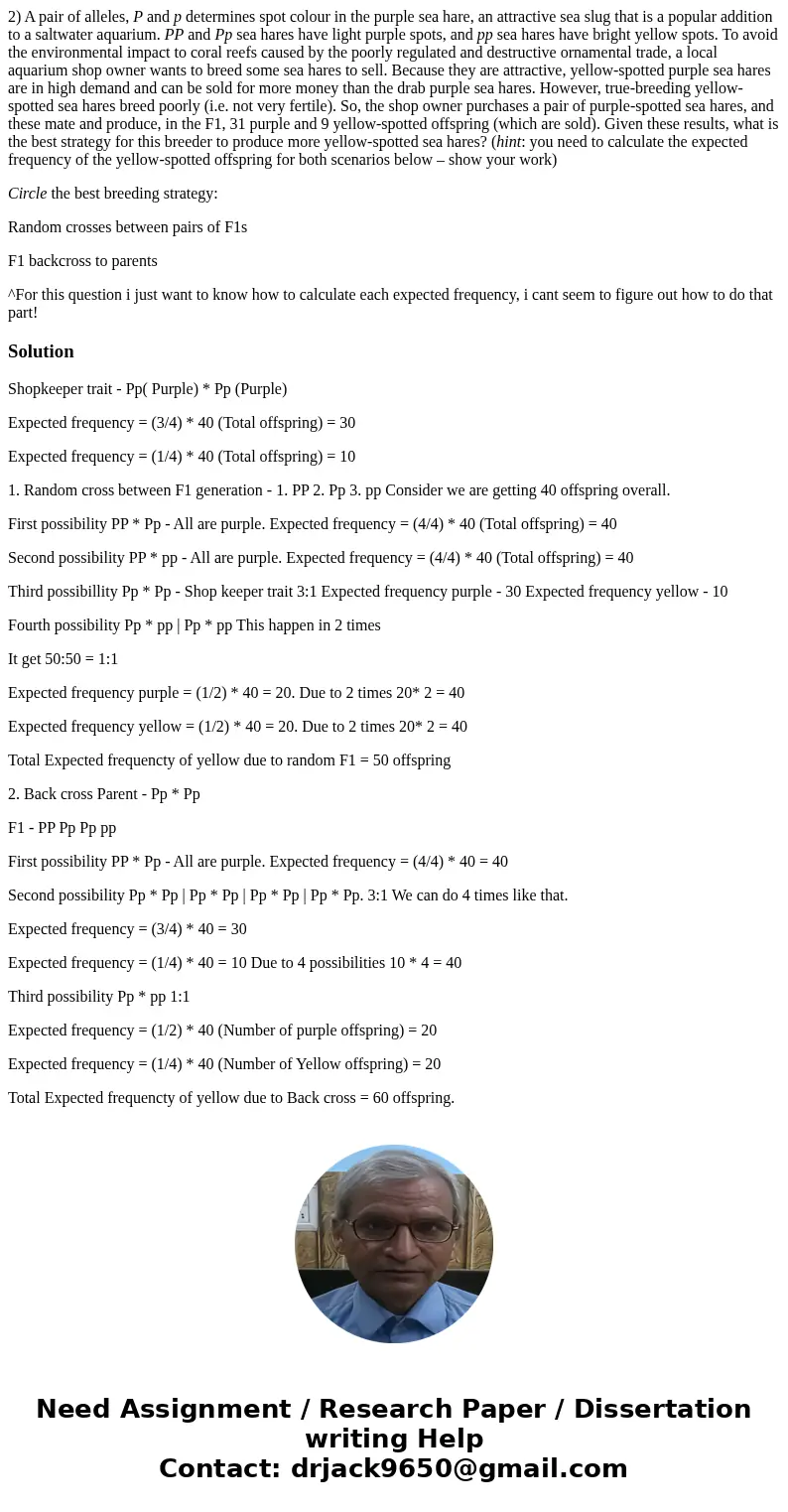2 A pair of alleles P and p determines spot colour in the pu
2) A pair of alleles, P and p determines spot colour in the purple sea hare, an attractive sea slug that is a popular addition to a saltwater aquarium. PP and Pp sea hares have light purple spots, and pp sea hares have bright yellow spots. To avoid the environmental impact to coral reefs caused by the poorly regulated and destructive ornamental trade, a local aquarium shop owner wants to breed some sea hares to sell. Because they are attractive, yellow-spotted purple sea hares are in high demand and can be sold for more money than the drab purple sea hares. However, true-breeding yellow-spotted sea hares breed poorly (i.e. not very fertile). So, the shop owner purchases a pair of purple-spotted sea hares, and these mate and produce, in the F1, 31 purple and 9 yellow-spotted offspring (which are sold). Given these results, what is the best strategy for this breeder to produce more yellow-spotted sea hares? (hint: you need to calculate the expected frequency of the yellow-spotted offspring for both scenarios below – show your work)
Circle the best breeding strategy:
Random crosses between pairs of F1s
F1 backcross to parents
^For this question i just want to know how to calculate each expected frequency, i cant seem to figure out how to do that part!
Solution
Shopkeeper trait - Pp( Purple) * Pp (Purple)
Expected frequency = (3/4) * 40 (Total offspring) = 30
Expected frequency = (1/4) * 40 (Total offspring) = 10
1. Random cross between F1 generation - 1. PP 2. Pp 3. pp Consider we are getting 40 offspring overall.
First possibility PP * Pp - All are purple. Expected frequency = (4/4) * 40 (Total offspring) = 40
Second possibility PP * pp - All are purple. Expected frequency = (4/4) * 40 (Total offspring) = 40
Third possibillity Pp * Pp - Shop keeper trait 3:1 Expected frequency purple - 30 Expected frequency yellow - 10
Fourth possibility Pp * pp | Pp * pp This happen in 2 times
It get 50:50 = 1:1
Expected frequency purple = (1/2) * 40 = 20. Due to 2 times 20* 2 = 40
Expected frequency yellow = (1/2) * 40 = 20. Due to 2 times 20* 2 = 40
Total Expected frequencty of yellow due to random F1 = 50 offspring
2. Back cross Parent - Pp * Pp
F1 - PP Pp Pp pp
First possibility PP * Pp - All are purple. Expected frequency = (4/4) * 40 = 40
Second possibility Pp * Pp | Pp * Pp | Pp * Pp | Pp * Pp. 3:1 We can do 4 times like that.
Expected frequency = (3/4) * 40 = 30
Expected frequency = (1/4) * 40 = 10 Due to 4 possibilities 10 * 4 = 40
Third possibility Pp * pp 1:1
Expected frequency = (1/2) * 40 (Number of purple offspring) = 20
Expected frequency = (1/4) * 40 (Number of Yellow offspring) = 20
Total Expected frequencty of yellow due to Back cross = 60 offspring.
So, Back cross method is best choice.
| P | p | |
| P | PP (Purple) | Pp (Purple) |
| p | Pp (Purple) | pp (Yellow) |

 Homework Sourse
Homework Sourse